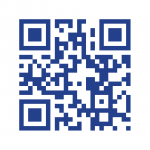 By now, most Americans have seen a QR code, even if they didn’t initially understand why these two-dimensional matrix bar codes were suddenly appearing on products, advertisements and business cards.
By now, most Americans have seen a QR code, even if they didn’t initially understand why these two-dimensional matrix bar codes were suddenly appearing on products, advertisements and business cards.
Called QR for “quick response,” the codes were created in 1994 by Japanese automakers to track parts. Now companies around the world use them to link consumers directly to their websites, where they can shop and find coupons, special offers and product information.
While QR codes are already considered outmoded by the creators of next-generation apps that link the physical and virtual worlds in quicker and more entertaining ways, at least one New Mexico advertising agency believes QR codes haven’t outlived their usefulness and are more reliable than newer so-called “hardlinking” technologies.
Defining the Value
Reading QR codes requires a scanner that’s available as a smartphone application. The scanner converts the image to an Internet address, where the digital content is posted. Without the smartphone, the QR code is unreadable, making it worthless to people whose mobile phones lack Internet connectivity.
While the smartphone audience is finite, so is the audience of newspaper readers and radio listeners, said Brittany Johnson, social media manager at Las Cruces-based Wilson Binkley Advertising and Marketing. QR codes are just one tool among many, and they’re appropriate if they provide something of value to the customer, such as convenience or a reward.
“We only use it when we feel it will benefit the [advertising] client,” Johnson said of the codes. “We do use it with retail clients, who use codes to provide promotions or coupons or direct people to their Facebook page, which helps them build their email database.
“If a QR code just directs you to a website, it’s not effective. Someone can type in the website address just as quickly.”
Redundancy is just one of the problems that led AdAge magazine’s B.L. Ochman in March to declare QR codes “history.” Competition from emerging technologies, such as faster and more efficient invisible electronic codes, will push QR codes aside, she predicted. But advertisers bear part of the blame for failing to explain to the public what the codes are and how to use them, and some applications — on billboards or other inaccessible spots — were ill-conceived.
Not Just a Fad
While Johnson acknowledges these problems, she said it’s too early to dismiss QR codes even as new technology comes into play.
QR codes are most effective, she said, “when they’re incorporated with traditional media” to broaden the appeal of an advertiser’s message. A print ad, for example, might include a QR code that smartphone users can scan to find more information about a featured product or get directions to the store.
If used as part of a strategic marketing approach, QR codes on business cards, receipts, product packaging, brochures and other marketing materials can connect with customers by offering product discounts or access to customer feedback or product registration forms.
QR codes and their next-generation cousins appear to be more than a passing fad as they offer marketers new ways to engage consumers and encourage them to act.
Download 293_QR Codes Create Avenue for Targeted Marketing PDF
